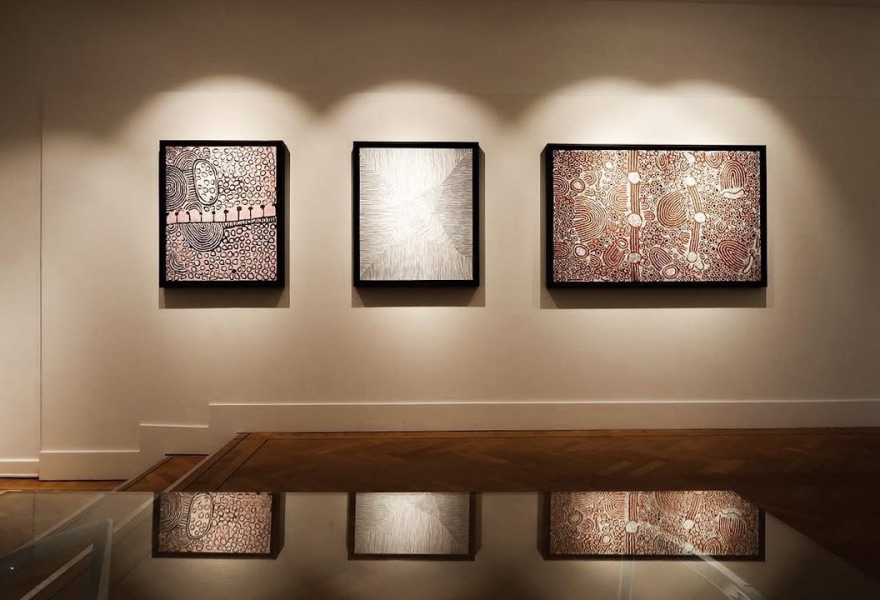02 november 2021, Flor Linckens
Fifty years of Papunya
Aboriginal art is booming. This summer, an ambitious plan was approved for a new Aboriginal art museum in Adelaide, a €129 million project. And this year, an annual art fair for indigenous art in Darwin sold over 2 million euros worth of art, an achievement that ensured that the fair is now committed to a permanent online marketplace. The interest in Indigenous Australian art fits in well with a changing art world in which previously under-represented groups are receiving more attention.
The popularity of this art form is also reflected in the fact that Sotheby's has been organising special auctions for Australian Aboriginal art in London since 2015, and in the United States since 2019. Leading art fairs such as Frieze LA, Art Basel, Art Miami also show Aboriginal art and in 2015, Emily Kame Kngwarreye's work was exhibited in the Central Pavilion during the 56th Venice Biennale. Her work has also been shown in Venice before, when she represented Australia at the 1997 Biennale. Documenta 13 in 2012 featured work by another important Aboriginal artist: Warlimpirrnga Tjapaltjarri. SmithDavidson Gallery, a gallery that has been dedicated to the dissemination of this art form for 16 years, recently opened the exhibition 'Papunya 50 Years, 1971 - 2021', which pays tribute to the small indigenous settlement of Papunya.
Papunya is considered the birthplace of contemporary Aboriginal art. While Australian Aboriginal art is inspired by a cultural tradition dating back more than 40,000 years, the art form is officially only decades old. Fifty years ago, in 1971, a group of Papunya Aboriginal men in the Western Desert (in the Northern Territory) started painting patterns, stimulated by the (white) school teacher Geoffrey Bardon — one of the first Western people to show an interest in the Aboriginal heritage — who also provided them with materials. Bardon ended up staying in the community for a year and a half. It resulted in a spark of creative energy, which led to more and more people joining. The artists experimented with colour and style and painted dots, lines, circles and footprints, which came together in an immediately recognisable visual language. They reflected on the land, culture, religion and history of the Indigenous Australian people. In 1972 the artists founded their own cooperative and Papunya Tula Artists was a fact.
In the exhibition 'Papunya 50 Years, 1971 - 2021', David Smith and Gabrielle Davidson show a series of unique works from the SmithDavidson collection, one of the largest collections of Aboriginal Art outside Australia. What’s remarkable is that these works cover the span of these fifty years. For example, the exhibition also includes “Boy's Story (Version 2)” by Don Ellis Tjapanangka from 1971: the starting point for this Australian Aboriginal Art movement. The exhibit at SmithDavidson Gallery features work by both male and female artists, each expressing their unique histories, experiences and visual language in their own unique way.


